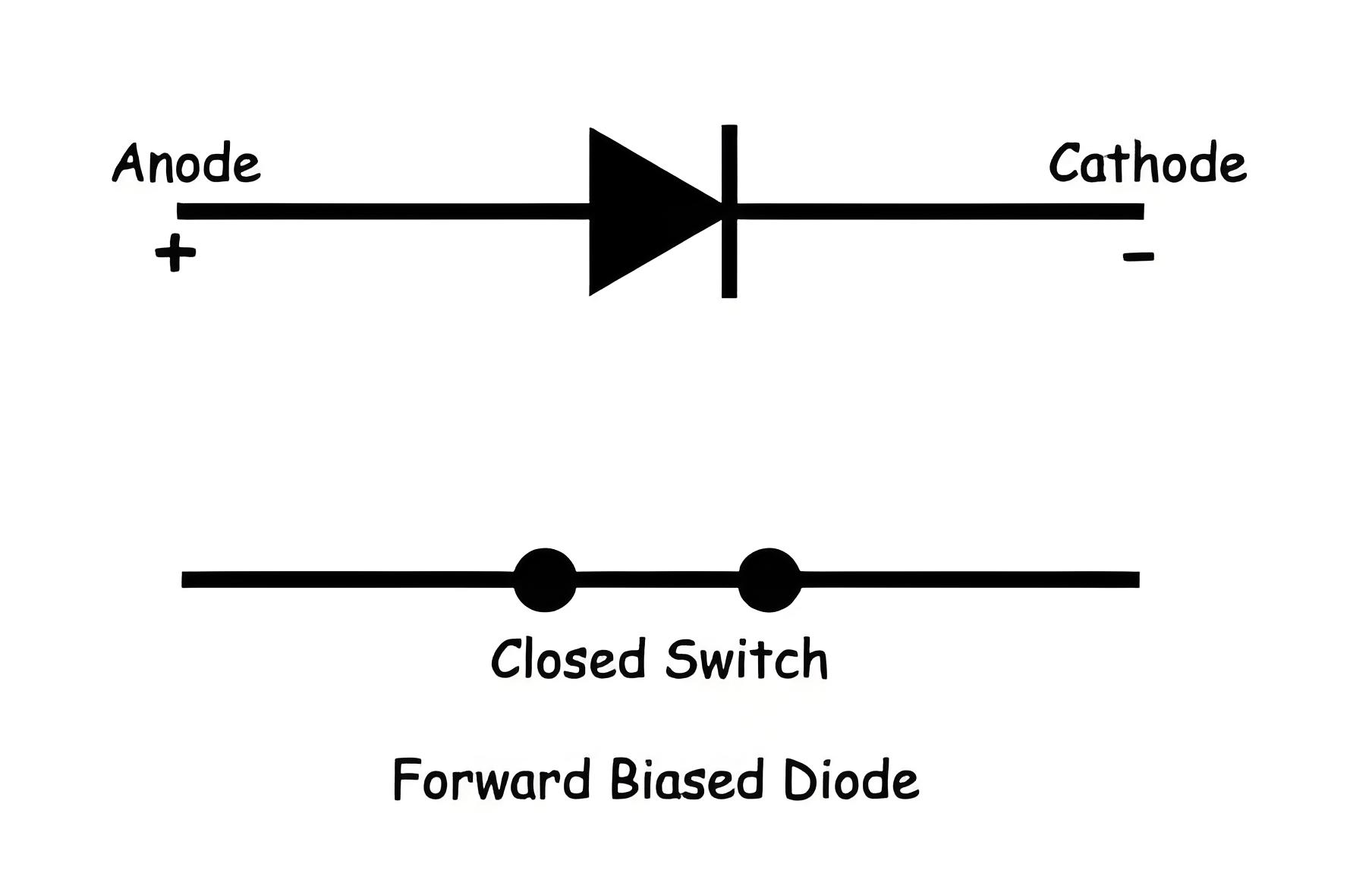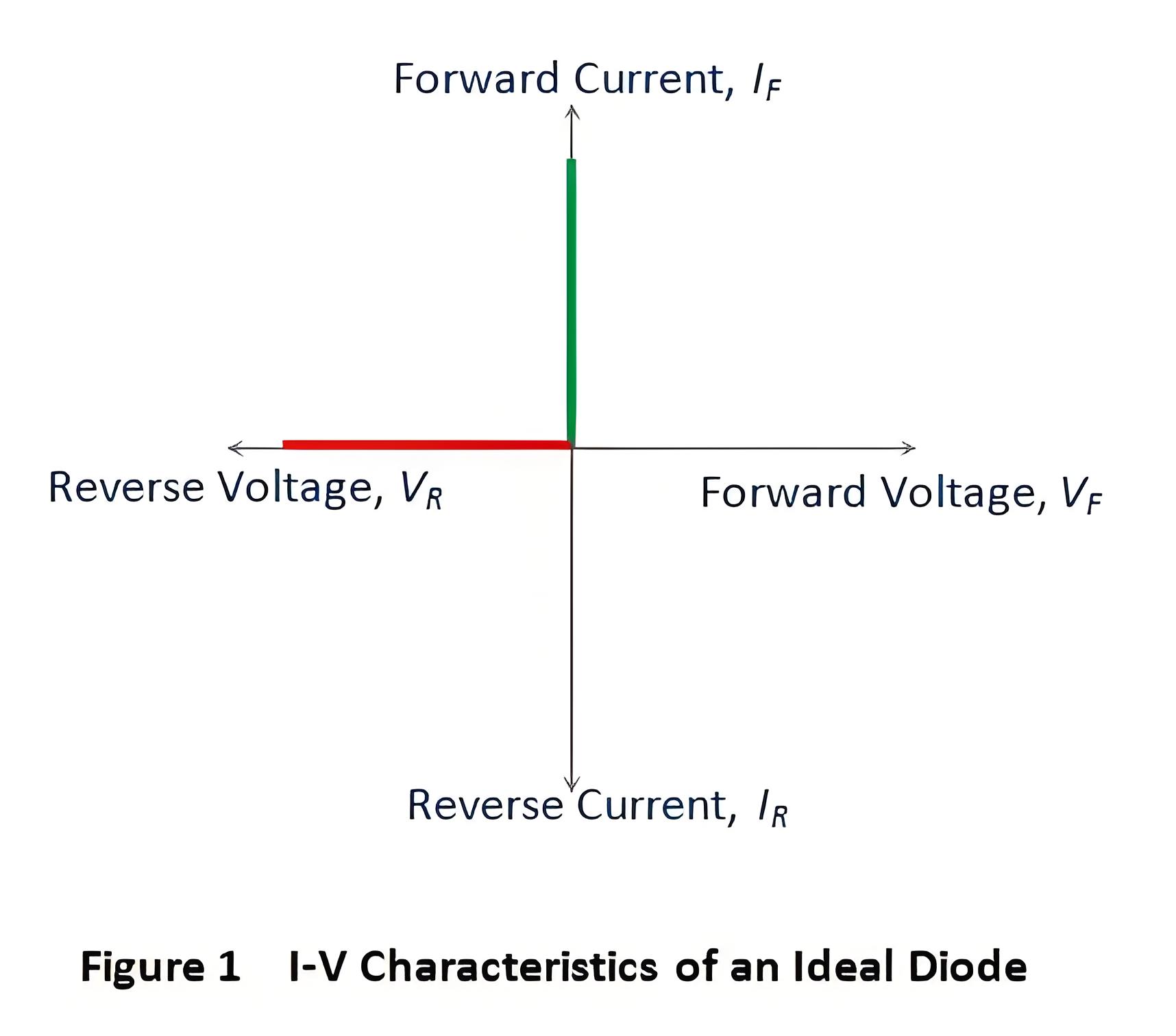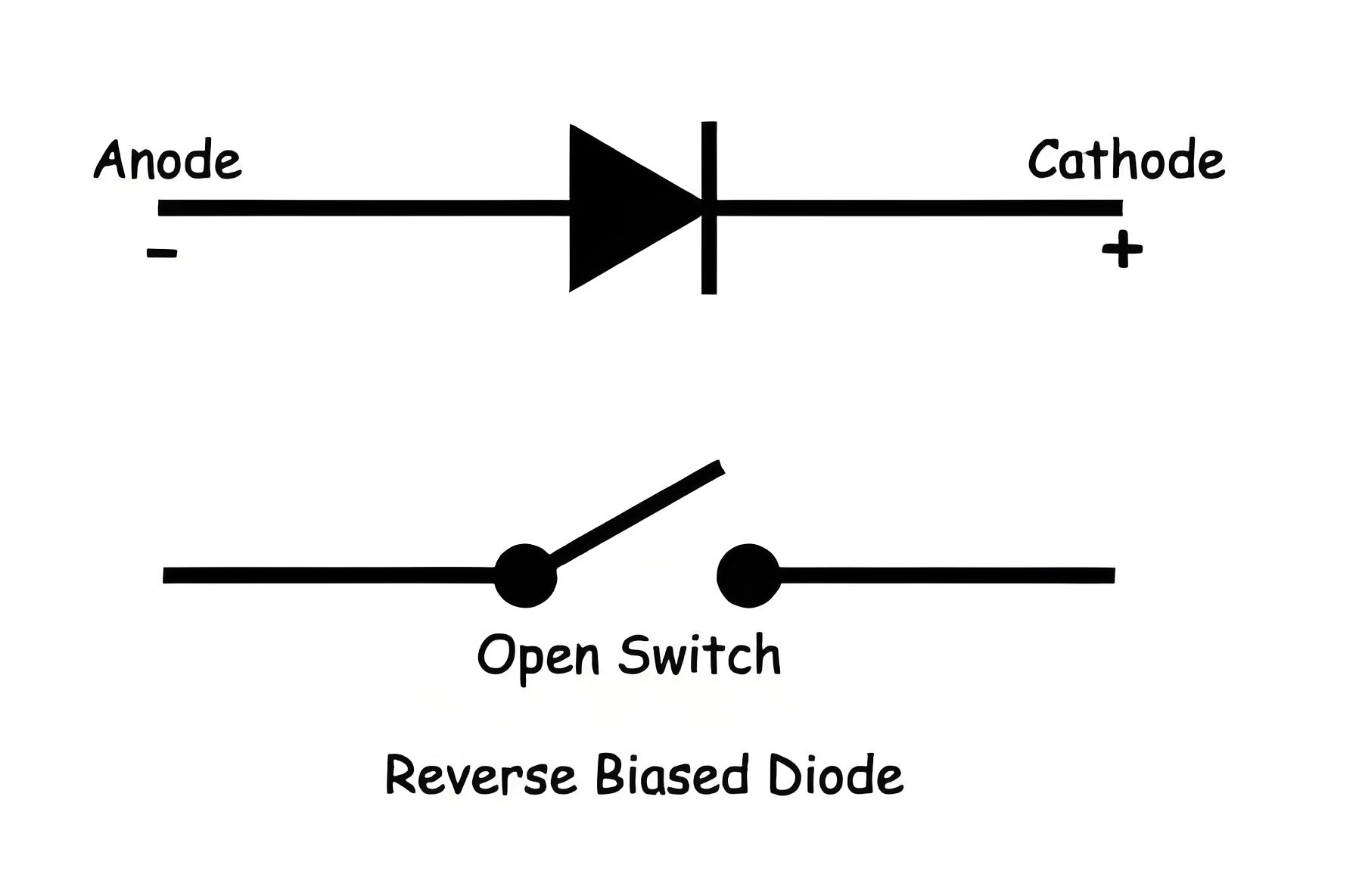What is an Ideal Diode?
What is an Ideal Diode?
Ideal Diode Definition
An ideal diode is defined as a perfect diode without any flaws, operating ideally in both forward and reverse biased conditions. Typically, a diode works in either forward or reverse bias. We can analyze the characteristics of an ideal diode in these two modes separately.
Characteristics of Ideal Diode when Forward Biased

Zero Resistance
In forward bias, an ideal diode offers zero resistance to current flow, making it a perfect conductor. This means the ideal diode has no barrier potential. This raises the question of whether an ideal diode has a depletion region, as resistance comes from immobile charges in the depletion region.
Infinite Current
An ideal diode can allow infinite current to flow in forward bias due to zero resistance, as per Ohm’s law.
Infinite Amount of Current
This property stems from the ideal diode’s zero resistance in forward bias. According to Ohm’s law (I = V/R), if resistance (R) is zero, the current (I) becomes infinite (∞). Thus, an ideal diode in forward bias can theoretically allow an unlimited amount of current to flow through it.
Zero Threshold Voltage
This characteristic also comes from the ideal diode’s zero resistance. The threshold voltage is the minimum voltage needed to overcome the barrier potential and start conduction. If an ideal diode has no depletion region, there is no threshold voltage. This allows the ideal diode to conduct immediately when biased, as shown in the green curve of Figure 1.

Characteristics of Ideal Diode when Reverse Biased

Infinite Resistance
In reverse bias, an ideal diode is expected to completely block the flow of current. This means it behaves like a perfect insulator when reverse biased.
Zero Reverse Leakage Current
This property of the ideal diode can be directly implied from its previous property which states that the ideal diodes possess infinite resistance when operating in reverse biased mode. The reason can be understood by considering the Ohm’s law again which now takes the form (shown by red-curve in Figure 1). Thus it means that there will be no current flowing through the ideal diode when it is reverse biased, no matter how high the reverse voltage applied be.
No Reverse Breakdown Voltage
Reverse breakdown voltage is the voltage at which the reverse biased diode fails and starts to conduct heavy current. Now, from the last two properties of the ideal diode, one can conclude that it will offer infinite resistance which completely inhibits the current flow through it. This statement holds good irrespective of the magnitude of the reverse voltage applied to it. When the condition is so, the phenomenon of reverse breakdown can never occur due to which there will be no question of its corresponding voltage, the reverse breakdown voltage. Due to all these properties, an ideal diode is seen to behave as a perfect semiconductor switch which will be open when the reverse biased and closed when forward biased.
Now, let us face the reality. Practically there is no such thing called ideal diode. What does this mean? If there is no such thing, then why do we need to know or learn about it? Isn’t it just a waste of time? No, not really.
The reason is: The concept of idealizing makes things better. The rule holds good for anything, I mean, not only technical. When we come to the matter of ideal diode, the truth manifests as the ease with which a designer or debugger (might be anyone for that matter, say, even a student or a layperson) can model/debug/ analyse a particular circuit or a design as a whole.
Practical Importance
Understanding the ideal diode concept helps in modeling, debugging, and analyzing circuits, even though ideal diodes do not exist in reality.
The Electricity Encyclopedia is dedicated to accelerating the dissemination and application of electricity knowledge and adding impetus to the development and innovation of the electricity industry.













